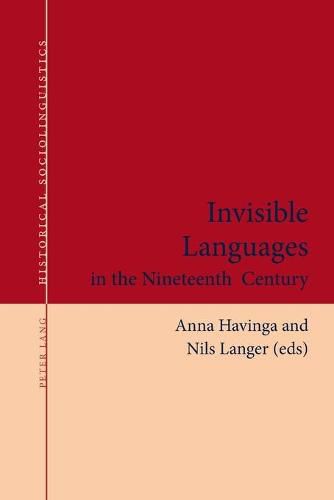Readings Newsletter
Become a Readings Member to make your shopping experience even easier.
Sign in or sign up for free!
You’re not far away from qualifying for FREE standard shipping within Australia
You’ve qualified for FREE standard shipping within Australia
The cart is loading…






This title is printed to order. This book may have been self-published. If so, we cannot guarantee the quality of the content. In the main most books will have gone through the editing process however some may not. We therefore suggest that you be aware of this before ordering this book. If in doubt check either the author or publisher’s details as we are unable to accept any returns unless they are faulty. Please contact us if you have any questions.
The great linguistic diversity of spoken languages contrasts greatly with the much smaller number of languages used in written discourse. Many linguistic varieties - in particular, regional and minority languages - are not deemed suitable for writing because they do not possess the necessary lexical wealth or grammatical complexity. Such prejudices are commonplace amongst non-linguists and they have their origin in the sociolinguistic history of their speaker communities.
This book focuses on the nineteenth century as the time when language became an important part of the cultural identity of speakers, communities and nations. It comprises fourteen chapters on a variety of languages and countries and seeks to explore why and how certain linguistic varieties were excluded from written discourse - in other words, why they remain invisible to contemporary readers and modern historians. The case studies in this book illustrate the factors involved in the invisibilisation of languages in the nineteenth century; the metalinguistic debates about the suppression or promotion of regional, minority and non-standard languages; and the ways in which a careful study of informal writing can visibilise the linguistic diversity of spoken languages.
$9.00 standard shipping within Australia
FREE standard shipping within Australia for orders over $100.00
Express & International shipping calculated at checkout
This title is printed to order. This book may have been self-published. If so, we cannot guarantee the quality of the content. In the main most books will have gone through the editing process however some may not. We therefore suggest that you be aware of this before ordering this book. If in doubt check either the author or publisher’s details as we are unable to accept any returns unless they are faulty. Please contact us if you have any questions.
The great linguistic diversity of spoken languages contrasts greatly with the much smaller number of languages used in written discourse. Many linguistic varieties - in particular, regional and minority languages - are not deemed suitable for writing because they do not possess the necessary lexical wealth or grammatical complexity. Such prejudices are commonplace amongst non-linguists and they have their origin in the sociolinguistic history of their speaker communities.
This book focuses on the nineteenth century as the time when language became an important part of the cultural identity of speakers, communities and nations. It comprises fourteen chapters on a variety of languages and countries and seeks to explore why and how certain linguistic varieties were excluded from written discourse - in other words, why they remain invisible to contemporary readers and modern historians. The case studies in this book illustrate the factors involved in the invisibilisation of languages in the nineteenth century; the metalinguistic debates about the suppression or promotion of regional, minority and non-standard languages; and the ways in which a careful study of informal writing can visibilise the linguistic diversity of spoken languages.